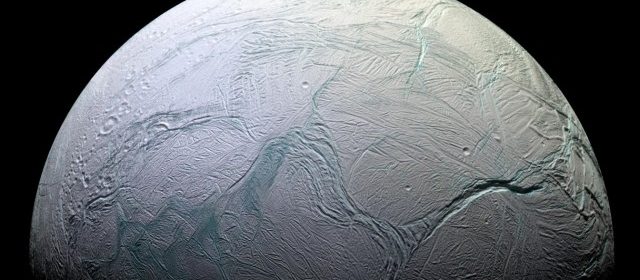Life on Saturn’s Moon

Researchers from Austria discovered that one of the moons of Saturn – Enceladus – may be able to house microbes like those on earth in its oceans. The Cassini spacecraft while encircling Enceladus found powerful geysers and a saltwater ocean. While researching the ocean they may have found that it may be habitable. The moons geysers have been surfacing from the subsurface ocean through the cracks in the ice layer. When the spacecraft went through the plumes of the geysers back in 2015 it detected molecular hydrogen. With this discovery Enceladus may have a source of chemical energy to sustain living microbes.
It is commonplace to find hydro-thermal vents on earth. These vents are found where the water interacts with the earth’s magma and then the heated water escapes. Old Faithful Geyser is located in Yellowstone Park and is an example of a hydro-thermal.
Even though life has not been discovered beneath the icy crust of Enceladus there has been hydrogen detected. Hydrogen is a good source necessary to sustain life. Scientists believe that the detection of hydrogen is a start to finding life on this moon. More research is necessary to conclude that the oceans of Enceladus can sustain life.

 Print
Print